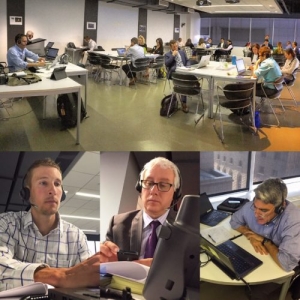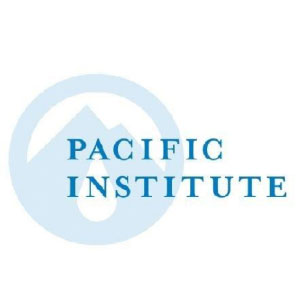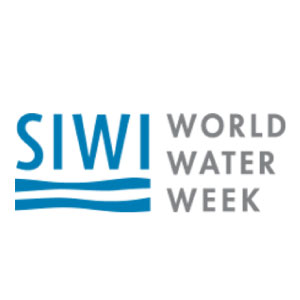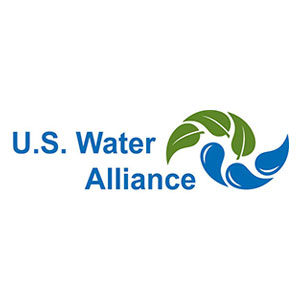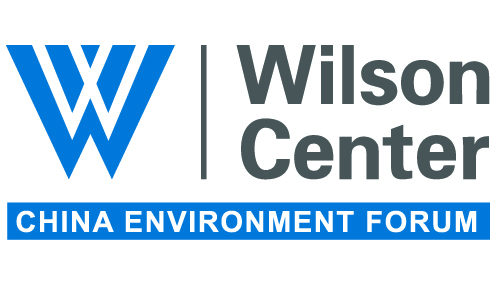America’s Water Infrastructure Requires New Mindset
Trust, cooperate, and innovate for safe water and thriving communities.
Codi Kozacek, Circle of Blue
 America’s substantial water challenges are not secret any longer. Cities poisoned by lead-contaminated drinking water and toxic algae, along with crippling droughts and dwindling groundwater reserves, make it increasingly clear that the nation’s water systems urgently require an overhaul. That was the consensus view of experts convened this week in New York City during H2O Catalyst, an interactive town hal
America’s substantial water challenges are not secret any longer. Cities poisoned by lead-contaminated drinking water and toxic algae, along with crippling droughts and dwindling groundwater reserves, make it increasingly clear that the nation’s water systems urgently require an overhaul. That was the consensus view of experts convened this week in New York City during H2O Catalyst, an interactive town hal
l event broadcast live by Circle of Blue with American Public Media and Columbia University.
Listeners from around the world joined the H2O Catalyst broadcast, which focused on the extent of repairs needed to upgrade old and inadequate pipes and treatment plants, and redesign the way water is collected and treated.
Event Host, David Brancaccio
David Brancaccio is the host of American Public Media’s Marketplace Morning Report, now a regular segment on NPR’s Morning Edition. His reporting focuses on the future of the economy, financial and labor markets, technology, the environment and social enterprises.
Patricia Mulroy is a senior fellow at the Metropolitan Policy Program of the Brookings Institution. In addition, she serves as the senior fellow for climate adaptation and environmental policy at UNLV’s Brookings Mountain West. She previously served as the general manager for the Southern Nevada Water Authority.
Professor Upmanu Lall is director of the Columbia Water Center, a unit of the Columbia University’s Earth Institute. Lall has over 33 years of experience in statistical and numerical modeling of hydrologic and climatic systems, and water resource planning and management.
Jeff Hughes is the Director of the Environmental Finance Center at UNC. Jeff works with local governments, not for profit organizations, and private companies to identify and implement innovative methods of financing and maintaining environmental facilities and programs. Jeff has worked extensively overseas as an environmental finance specialist with the Research Triangle Institute, providing technical support and training assistance to local and national governments throughout Eastern Europe and Africa.
Diane VanDe Hei is Executive Director of the Association of Metropolitan Water Agencies (AMWA). AMWA repesents the nation’s largest drinking water system serving drinking water to over 110 million people. Diane has held this post since 1990 and leads the association’s legislative and regulatory efforts and continues to work with others including AMSA in the development of new tools to enhance the competitiveness of the nation’s drinking water and waste water systems.
Better Together? Collaboration & Water Supply
Pat Mulroy – Senior fellow at the Metropolitan Policy Program of the Brookings Institution
Moderator: Annie Snider, Politico
Annie Snider
Welcome to our conversation with Pat Mulroy. This is Annie Snider here, from Politico. We’re going to be talking about collaboration and partnerships and the policy that can help deal with some of these water infrastructure and water financing challenges. I’m going to get things kicked off here, but we really do want this to be an interactive conversation, and so we do hope folks on the line will add their questions to the document that should be up in front of you. Pat, thanks for being with us.
Pat Mulroy
My pleasure, how are you this morning, Annie?
Annie Snider
Climate change is going to, at least for the next decade, significantly change precipitation patterns in the West, and along with that comes the exposure to long protracted droughts like we have never experienced.
What is hopeful in what could seem a bleak landscape, is that there’s been significant progress made in the conversations and in the cooperations between the agricultural and the urban sectors.
-Pat Mulroy
Pat Mulroy
Not only will it bring the cost down, I think it is one of the only pathways of survivability in the West. We have to be very frank. Climate change is going to, at least for the next decade, significantly change precipitation patterns in the West, and along with that comes the exposure to long protracted droughts like we have never experienced.
What is hopeful in what could seem a bleak landscape, is that there’s been significant progress made in the conversations and in the cooperations between the agricultural and the urban sectors. I think that there has been a realization that protecting the larger systems that they share, and that everyone has to be a part of a larger solution, taking a more proactive approach to managing through droughts rather than the traditional 20th century reactive mode, is going to be all-important. You see this beginning especially to emerge on the Colorado River, where the urban areas, along with federal dollars, have pooled their financial resources and have said to all users, “If we will help you pay for conservation, be it that you rest some of your land early on to avoid the whole Colorado system from crashing” and they have propped reservoirs up in the process by doing it.
So, that kind of a partnership that doesn’t go to eviscerating the agricultural landscape, that recognizes there are real communities that are tied to those agricultural endeavors, and that the agricultural produce that the United States creates is an integral part of the international food chain, I think that is the path forward.
Annie Snider
So what kind of partnerships have you seen work? Give me some examples of what has worked well? And I’m particularly interested in ones that haven’t worked, are there things that have been tried that have just ran into a wall, that just weren’t the right way to go, that seemed great at the beginning maybe?
Pat Mulroy
Doing it with a hatchet is going to cause not only great disruptions but enormous animosities that then come back to bite you in times when you really need that cooperation.
-Pat Mulroy
Let’s start with the ones that have worked. I’m going to go back to the Colorado River, because it has been a great example. The Metropolitan Water District entered into a partnership with the Palo Verde Irrigation District, and they acquired what they called “dry year option.” In other words, before the crisis hits, Palo Verde was willing to take out some of its land from agricultural production, being reimbursed both, the district, the community, thereby the larger economy, the area is being paid by Metropolitan for not using that water. That water was then left in Lake Mead for Metropolitan’s future use, for their ability to use it. Well, in doing so, it benefited the whole system. Because had it not been for Metropolitan’s and for other agencies’ efforts in leaving water behind in the reservoirs, Lake Mead would have gone into shortage conditions. When, however, Metropolitan was hit by the devastation of last year’s drought, they had to then rely on those reserves that they had acquired from Palo Verde in the better years. Without those resources, Southern California, all 20 million people in Southern California who rely on Colorado River water, would not have made it through.
Now, Palo Verde had an additional infusion of capital into the area, both at the individual farmer level and at the community level. Metropolitan had a drought reserve that they had stored for themselves, and in the larger context, the rest of us all benefited during those times because it propped the reservoir up and made the reservoir and the whole Colorado River system more resilient.
What has not worked so well, has been when entrepreneurial – how do I put this – water investors, let’s say, have gone into rural communities, and it’s happened in Colorado and it’s happened elsewhere in the West, where they’ve essentially bought out all the agricultural water, and they have then flipped it to a metropolitan area, whatever that metropolitan area in the area might be, for their use. Well those rural communities got devastated. They have massive unemployment, the whole community suffers, the whole economy of that community starts crashing. It causes a lot of social disruption. It didn’t necessarily provide any environmental benefits. Those kind of wholesale movements of water, from a agricultural use, to an urban use, have to be very, very carefully approached. Doing it with a hatchet is going to cause not only great disruptions but enormous animosities that then come back to bite you in times when you really need that cooperation.
Annie Snider
Interesting. We have a question here from the audience about industry, what role can they play, are they a potential partner? What role is there for an educated consumer in the water needs, products that they’re buying?
Pat Mulroy
It’s really interesting. As the drought really began to settle in in California, you saw especially in the media a lot of discussion about us shipping our water to foreign countries by shipping our food resources and our agricultural products into Asia and into the Middle East. Ironically, with every cell phone battery we bring into this country we are importing somebody else’s water. I think there’s been very little awareness on the part of the public how much of the water footprint everything has. From the clothing that we wear, to the tech products that we use, everything comes with a water footprint. I think there’s an enormous responsibility on the part of industry to really lead in this area. They have much deeper pockets than the average homeowner or the average resident in any community, and for them it is the cost of doing business. They have an opportunity to help in the innovation space, and see that ground zero where new innovation gets tested in the water conservation space, where new technologies are deployed and where they show an enormous sense of stewardship towards the waste water that they discharge and the amount of water that they take in.
There’s a leadership role there that some companies have already stepped up to the plate and are beginning to assume that responsibility, and others are lagging behind. But I think bringing them into the larger conversation is all- important.
Annie Snider
So you talk a little bit about the awareness at the consumer level, or lack thereof. Where does behavior change fit into all this? You were talking on the main panel about the inability to sustain growth if patterns don’t change, if usage doesn’t change. Tell us a little more about that, about how do you go about doing that? Who’s responsibility is it?
Pat Mulroy
People want to be part of the solution. We have found that the majority of our customers don’t want to be viewed as water wasters, they want to be as frugal as they possibly can. But they need the tools, and they need the education, and they need the financial support to be able to do it.
-Pat Mulroy
Oh it is everybody’s responsibility. I have sat through so many discussions where economists have argued what the threshold price of water needs to be where you start changing behavior. And I always push back. People have a very different relationship with their water supply than they do with their power supply, with their phone bills, with everything else. There is a hardening there beyond which it becomes very difficult for someone to be able to see a return for their conservation investment.
We’ve found in Southern Nevada where we took the community in five short years into a 40 percent reduction in how much water they use, as an ongoing matter. Not just as a temporary drought response with Draconian measures. But a ongoing sustainable change in water use habits. Pricing plays a role in that it continues to send a signal on the significance of water, but people need to be educated what can they do, and then in all honesty they need the financial help.
When we reached out in the West and it doesn’t matter where in the West you are, most of the water is used outside because it’s so arid, and we began to pay our customers to take their grass out, and help them in that initial upfront capital investment, they made the change. People want to be part of the solution. We have found that the majority of our customers don’t want to be viewed as water wasters, they want to be as frugal as they possibly can. But they need the tools, and they need the education, and they need the financial support to be able to do it.
Annie Snider
I wonder, is the price symbol the most important in sparking behavior change or is some of it, you talk about the customers wanting to be part of the solution, is it more than just the money issue?
Pat Mulroy
You can’t leave the average homeowner who is struggling to pay their monthly bills, who is struggling to pay their mortgage, who’s got kids, and other obligations, with the sense that the problem is being fixed on their back at their expense.
-Pat Mulroy
It is much more than the money issue. I think the single biggest most critical ingredient that we found is, is there a reason why people have to change? Is that reason legitimate? If you rely solely on pricing, you’re creating such stratification and you’re fixing the problem on the back of the people that can least afford it.
For us, for example, when your single largest customer is a sultan from a foreign country, who’s doorknobs are $500,000 on his house, who uses 17 million gallons a year, and he really doesn’t care what you charge him, are you really going to affect his behavior change through a pricing structure? No. Can you do it by mandate? Yes. That’s why it’s a balance. You can’t leave the average homeowner who is struggling to pay their monthly bills, who is struggling to pay their mortgage, who’s got kids, and other obligations, with the sense that the problem is being fixed on their back at their expense.
Annie Snider
So we’ve had a few questions here from the audience about the role of schools and community education, if it is more than just about pricing as you describe, what role can some of those institutions play in getting the message across and shaping behavior change?
Pat Mulroy
One of our greatest partners has always been the school systems. Every summer we run “Teach the Teacher” programs, the lessons of water reality and water conservation and the water cycle and connecting the next generation to the water issue in a very different way, is embedded in the curriculum now. It’s embedded in the third grade, it’s embedded in the fifth grade, it’s embedded in the ninth grade. It is a critical part. Kids can be the greatest teachers of their parents.
Annie Snider
So we’ve been talking about the kinds of changes that can happen at the local level. What role does the federal government have to play in this? Are they just the financial benefactor, or is there things that the federal government can be doing, and we’re talking mostly on the water supply side, are there policy changes that need to be made? There’s been some interest on the Senate side in Congress in doing a wider water bill, there’s been efforts to get something through for California, they’re kind of broadening their scope. Are there things that you’d like to see out of that?
Pat Mulroy
It is an extremely emotional issue in the state of California, there are a lot of subplots playing themselves out, and it is a very heavy lift to get it done for one state, let alone for the entire country.
-Pat Mulroy
That relationship with the federal government is really interesting. Because water is so splintered jurisdictionally amongst various federal agencies. Look, you have the US Corps of Engineers, you have the Department of the Interior, you have the Environmental Protection Agency, just to mention a few. It is embedded in so many different jurisdictional domains, that it’s very difficult for the federal government to really address a policy that is effective across the country. There are large differences across the country. But in each particular region, those federal agencies that are closest and have jurisdiction over various parts of the larger water and environmental systems in an area, they have to partner with the state and the locals. They have the carrot and the stick. They have some regulatory authorities that can motivate areas to avoid regulatory smothering, and they have some financial opportunities where they can provide incentive. It’s a carrot and a stick. I’m not a big fan of national policies because they will create it in their own way. The differences are so enormous across the country, geographically, hydrologically, that trying to create a one-size-fits-all bucket isn’t working.
That’s why California is having such a hard time getting this legislation through. It is an extremely emotional issue in the state of California, there are a lot of subplots playing themselves out, and it is a very heavy lift to get it done for one state, let alone for the entire country.
Annie Snider
Are there specific things, I am really interested in the stick side of the equation, we’ve seen that a little bit on the Colorado River, Deputy Interior Secretary Mike Connor last year, set the bar and said the states really need to come up with a solution before this becomes a crisis, or else the feds are going to step in. Is that what we’re hoping to do?
Pat Mulroy
This drought on the Colorado [River] is real and it is not getting any better.
-Pat Mulroy
It is in that arena. Listen, there is nothing that the states along the Colorado River have greater disdain for than federal intervention. The only reason that, for example, the federal government is the water master for the lower section of the river is because of the U.S. Supreme Court lawsuit that was settled between Arizona and California. In the upper basin, the federal government has no role, and they will fight to the death to keep them out. So that threat has been effectively used by Bruce Babbitt, it got effectively used by Gail Norton, and now it’s being used by this administration. It is something that brings the states to the table. Especially when the situation is such that the need is real.
It’s not some artificially contrived catalyst. This drought on the Colorado [River] is real and it is not getting any better. So, yes, I think that is a very appropriate tool for the federal government to use.
Annie Snider
I think for the agricultural space to be as effective as it can be, it has to be driven by the agricultural users themselves. Those communities are not going to change their practices, and they’re in total defense mode at the moment, unless they see that it benefits them
-Pat Mulroy
So we have a bunch more questions here about the infrastructure side and the investment side, going to turn the conversation back to that. Is there a role, we talked a little bit about investors coming in in a crisis and the challenges that that can create in rural areas and the like, what about sustainably minded investors? Are there things that they can be doing? How should they be approaching us?
Pat Mulroy
I think there is a next generation of farming techniques around which you’re seeing innovation happen in that space, where more food can be grown using less water, where different irrigation structures are being explored. I think for the agricultural space to be as effective as it can be, it has to be driven by the agricultural users themselves. Those communities are not going to change their practices, and they’re in total defense mode at the moment, unless they see that it benefits them, that there’s something in it for them. So if an investor buys a ranch or a farm let’s say, if he wants to use it in order to bring in new farming techniques and look at how food can be grown with less water.
Financing The Replacement Era
Jeff Hughes – Director of the Environmental Finance Center at UNC
Moderator: Brett Walton, Circle of Blue
Brett Walton
Hi, thank you all for choosing the finance and rates conversation. I’m Brett Walton, Circle of Blue, and I’m here with Jeff Hughes, of UNC’s Environmental Finance Center. As an aside to people that are listening in to the conversation and to give you a peek behind the curtain as to how this call’s actually working, Jeff and I are in the same room in New York but we’re sitting about 30 feet apart with our backs to each other so that our headsets and our audio works correctly. Lots to talk about. A reminder that if you want to pose a question, you can type it into the document that is on your screen. I’ll be looking at those as Jeff and I talk, and pulling some questions from there.
We’re going to hear eventually in this conversation about rate designs, state and federal rules, financing, 21st century water systems. Some of the things we’ve talked about in the opening. But before we get to that, I want Jeff to set the stage for us.
Jeff, why is this a particularly challenging time for water utilities?
What hurdles are they up against?
Jeff Hughes
Sure. Well, it’s hard to separate the financial challenges of water utilities from the general challenges because I think for many water utilities it is a finance challenge that keeps them awake at night. The finance challenge is really, in some ways it was easy to predict and in some ways there are some surprises that we didn’t see coming. But a lot of the finance challenges are based on the age of the infrastructure that we have in the ground and when it was put in. We are now, for particularly many of the older cities, facing infrastructure portfolio that is now at the end of its life or getting close to the end of its life and it’s needing more investment. So the numbers are coming in, at the same time there are new environmental regulations, new understanding of environmental threats that are causing some additional needs on utilities. And we have some areas of the country that are still growing quite fast and are needing new infrastructure put in.
So, when you add up all of those different financial needs and try to put it on the existing customer base, we are seeing some mathematical challenges as far as the revenue needed to pay off debt versus the customer base ability to generate that revenue.
Brett Walton
So then, most of the water prices paid for by local customers… are they to a breaking point, do they have capacity to absorb all of these increases that are needed, or do we need to look at other options?
Jeff Hughes
…the household bills in many areas have gotten high enough that for certain customers we’re starting to see the strain, we’re starting to see increased disconnections, we’re starting to see rebellions, rate payer rebellions in urban, low income neighborhoods.
-Jeff Hughes
Brett Walton
I want to explore some more of those discrepancies, the variety that we see within water utilities because it’s not all the same problem everywhere. So within urban utilities, there’s some very wealthy people in the city and middle income people that have no problem paying water bills and then there’s lower income people that do. You mentioned earlier about federal programs for water assistance, that we have them for energy, but not for water. Can you explain a bit more about what some of those low income programs might look like?
Jeff Hughes
Yes, and I really think this is going to be something that if a utility hasn’t already started to think about it, they’re going to start to think about it in the future. Your survey did an excellent job of just showing while still moderately inexpensive, the price of water’s going up. It used to be that water and waste water services were so cheap, we didn’t really think about subsidizing at the household level. If there was federal involvement or statement involvement, it would just come in at the top and it would go directly to the utility and it would be the utility’s responsibility to figure out how to use that federal or state assistance. Now, the household bills in many areas have gotten high enough that for certain customers we’re starting to see the strain, we’re starting to see increased disconnections, we’re starting to see rebellions, rate payer rebellions in urban, low income neighborhoods.
You’re starting to see things that you wouldn’t have dreamed of seeing 10 or 15 years ago where utility finance offices are spending as much time studying their customers’ financial capacity as they are traditional financial tasks.
-Jeff Hughes
So we see places like Philadelphia and D.C. having done detailed affordability analyses of their customer base and identifying neighborhoods and communities within their service areas that are going to need additional help. They’ve started to look for funds and mechanisms to provide that help on their own without necessarily going to the state and federal government. We have bill assistance programs, we have in some cases, where it’s legal, we have separate rate structures for low income. So, there’s a variety of mechanisms that we’re starting to see and I think we’re going to see more of them as the price of water goes up.
Brett Walton
You said something interesting that I don’t think everyone knows, that was certainly news to me when one of the researchers at your finance center told me about it. One of the people who’s been typing into the document mentioned this too. That there are some states have laws that prevent subsidization of low-income residents by a utility. So, there are states that have a different playing field for how this can be addressed. Is that right?
Jeff Hughes
That’s exactly right and I would be able to talk a lot more about that issue in about four months. We just got engaged for a national research project on that exact issue by a group of professional organizations. So, we’re just starting that project. But it’s safe to say that there are 50 financial legal frameworks in this country that influence local government rate setting, influence local government access to capital, what they can borrow money for. So, you really do have to look at these things from a state-level lens. It is true, to your point, there are some states, California is a good example, where cross subsidization of water customers through their rates is prohibited. And what that means is you cannot just arbitrarily say that you have a low-wealth population in this neighborhood and you want to charge this other neighborhood more and move that over to the low wealth neighborhood. It’s expressly prohibited and California’s not alone, many states have those prohibitions
Other states don’t. Other states have no problem with the utility itself deciding how to best balance the financial capacity of their customers. So, it’s really a complex and interesting legal framework that’s out there.
Brett Walton
We’ll certainly have to bring you back three months from now and see how that report works out. So, a lot of variety within utilities, as well. So we’ve talked about big systems and small systems. Diane VanDe Hei, who was on the call earlier, represents some of the larger systems. What are some of the differences that you see in how rates are designed and how water infrastructure is financed between these big utilities that might serve a Metropolitan area, versus a smaller utility that might be serving 1,000 people?
Jeff Hughes
I think the finance question is multi-fold. Often, in our work, we separate out the revenue generation side, the pricing side and then the access to capital side. So, on the pricing side, and the drivers and that influence what particular price structure you might have, large utilities have more diverse populations, can be, can actually have pricing structures that are maybe a little bit more resilient. Some of the really small rural systems of 1,000 people, if they lose the large employer and a quarter of their customer base fall out of work, which in some cases we’ve seen, it could have just major financial impacts very quickly.
On the finance side, the municipal bond market, again, is alive and well, it’s very, very strong for the large utilities. It is working well. I think many finance officers are just very happy with their ability to raise lots of capital. On the small side, the municipal bond market in most cases isn’t an option for a utility that serves 1,000 people. They are turning to a state funding program or subsidized loan program. They may be turning to regional banks for their capital needs.
-Jeff Hughes
On the finance side, the municipal bond market, again, is alive and well, it’s very, very strong for the large utilities. It is working well. I think many finance officers are just very happy with their ability to raise lots of capital. On the small side, the municipal bond market in most cases isn’t an option for a utility that serves 1,000 people. They are turning to a state funding program or subsidized loan program. They may be turning to regional banks for their capital needs.
Brett Walton
Okay, let’s look at some of the questions that are coming into the document. You guys are putting up some really excellent questions, some a lot more detailed than others. I’m going to try and consolidate some of these so we address the broadest issues possible. What I’m seeing repeated quite often is looking at financing for the future so we’re not exactly rebuilding what we had, but we’re looking at new types of infrastructures, they might be green infrastructure, wetlands, those things, decentralized infrastructure, like septic systems or waste water recycling systems or on-site gray water reuse, storm water, all these new things that we’re putting in. This financing for these new types of infrastructure look different than financing for the harder, grayer stuff.
Jeff Hughes
I think it does and I think there is an incredibly important connection between the financial tools and the types of the infrastructure. Keep talking about bonds, but the bond market, which is basically a lot of distributed investors getting together and loaning money with a fixed interest rate. That’s the most common structure. They’re very confident that the utility has the revenue to pay them back and owns and controls the assets and there’s just very little risk. In the decentralized world, while that model has some potential there’s some challenges to that model in the distributed infrastructure, often that infrastructure that’s likely to have the biggest impact may not be owned by the utility so it influences the utility mission it may result in improved water quality. But it may be infrastructure that is installed on private property, it may be a rain guard and it may be an engineered wetland and it may be a green roof. These are things that are owned by private property owners and the way we finance small scale private investments is very different.
If we could develop just a rock solid individual finance product, I mean we’ve done it for buying cars, we’ve done it for home improvements, if we could do it for green infrastructure we’d really see it pick up.
…that’s a core financial challenge that I think will become mitigated in the future as these technologies get innovative and the price comes down.
-Jeff Hughes
There are a lot of questions that have to be asked for that kind of mechanism, but I think there’s some potential. We’re also trying to learn a lot from our friends in the energy sector. We’ve seen an explosion of creative finance mechanisms used to distributed energy improvements, whether it’s energy efficiency or solar on people’s roofs, lots of exciting innovation has occurred on that. Some of that may be transferable, for example, using property assessments, which is something that a local government has authority to do in most areas of the country, potentially using property assessment for a private property which basically turns an investment into a future facing tax liability, potentially using that mechanism, again, to pay for a large scale cistern or a private property’s internal water recycling system.
Brett Walton
So, just so we’re clear here, when we’re talking about some of these decentralized solutions, you’re talking about decoupling ownership and finance and these two categories. So an example might be a utility wanting to reduce storm water runoff so it wants homeowners to install rain gardens or it wants homeowners to install rain barrels. Are you talking about a way that the city would help pay for that infrastructure to put on a house or property?
Jeff Hughes
Yeah, and we’re already seeing some ways that there are a number of urban utilities that have started to help support those financing, primarily through small scale grant programs. We have places like Philadelphia and Washington that do offer up some type of co-funding matching grant. But, so far, it hasn’t covered the bulk of the cost, but it’s a way of taking public dollars to support that. What I was alluding to earlier was maybe taking it to the next level scale of where there’s not enough grant to go around to put a green roof on every roof in Philadelphia. But if we could develop just a rock solid individual finance product, I mean we’ve done it for buying cars, we’ve done it for home improvements, if we could do it for green infrastructure we’d really see it pick up.
Right now at the facility level, some of the math is challenging as far as what a household might save as far as the storm water fee they pay their utility. It’s hard to back that into, say, a loan payment that could cover the cost of that installation. So, that’s a core financial challenge that I think will become mitigated in the future as these technologies get innovative and the price comes down and as the storm water fees and other fees that people are paying for not dealing with it goes up.
Brett Walton
Most of the revenue streams are going to come from the customers and they’re going to maybe not want to pay for the future needs, but at least see the value of it. It doesn’t take much to break that trust and it takes a long time to regain it.
-Jeff Hughes
Jeff Hughes
I think the decentralized portfolio of assets is going to play a role, for some utilities relatively minor, but for others it could be major, particularly in areas that are facing huge wastewater management costs. I think the recipe though is back to what I said in the large group is going to start with, and I think Pat said this too, it’s going to start with the trust and the communication between the utilities and the customers. Most of the revenue streams are going to come from the customers and they’re going to maybe not want to pay for the future needs, but at least see the value of it. It doesn’t take much to break that trust and it takes a long time to regain it.
So, most of the advising that we do with the utilities in the finance area is to understand your customer base and that’s more than understanding the median household income of your city, but it’s actually understanding the industrial customers that the different neighborhood customers and really starting to do some calculations about what is their ability to carry future infrastructure and are they willing to be a partner. I think that’s where things have to start. The other thing, Brett, just to finish on, is the way we do planning has often been dominated by very long planning scales and very conservative assumptions made with things like demand. I do think that we are seeing that being a challenge…
Brett Walton
Thank you all for being in the breakout session and we’ll see you all back in the main room.
Economic Engines Run on Water
Diane VanDe Hei – Executive Director of the Association of Metropolitan Water Agencies.
Moderator: Keith Scheider, Circle of Blue
Diane VanDe Hei
Yes. The membership of the association are the largest municipally owned public water systems around the country.
Keith Schneider
So the largest are? Who are the top three?
Diane VanDe Hei
The top three … Depends on if you are talking about wholesale or retail. When we say largest, it’s any utility above 100,000. That is about 1 percent of the 52,000 that you hear about in community water systems, New York City, Chicago, L.A., Seattle, Miami, New Orleans, to name a few.
Diane VanDe Hei
They are already seeing the impacts of sea-level rise. They have incorporated different design measures, alternative engineering standards to deal with what they see the level of the water maybe 50, 60 years from now.
-Diane VanDe Hei
Great. I was wondering Diane if you could tell us one or two stories of water systems that are doing a really good job?
Diane VanDe Hei
All are except for one. Just joking. Well, I’d like to turn to Miami-Dade. Miami-Dade is a drinking water, wastewater system. They are already seeing the impacts of sea-level rise. They have incorporated different design measures, alternative engineering standards to deal with what they see the level of the water maybe 50, 60 years from now. When you talk about that kind of planning and actually having to do. You have to bring the public into the conversation because you pay now for something that is needed later. In addition to keeping the water, wastewater system in good shape for today and tomorrow and being in compliance plus, they have engaged their public to significant success in accepting and even encouraging the inclusion of resilience into their planning. I think their story is a really good success story in part because they have taken it own as a community dialogue that sort of has to have everybody buy into literally I guess and figuratively to have it happen. I would say Miami-Dade is doing a great job.
There are others that are. Go the West Coast. Go to the Southern Nevada Water Utility or Las Vegas Valley Water District. They have seen the drought coming for the last 10 years as Lake Mead has gone down, down, down, down and has done I think a tremendous job of conservation…. Conservation is a great thing but it also diminishes the revenue you have. It’s kind of between a rock and a hard place in some ways. They have managed to build a customer base both with the businesses within Las Vegas and the home owners to the idea that you have to conserve water. It doesn’t necessarily mean that your rates are going to go down because of that infrastructure that the water has to come through. I think the community utility that is forward looking and there are others. Denver Water is another one.
Keith Schneider
Before we go to some of the questions that are appearing on my computer screen, since you are in Washington and we have this trillion dollar plus shortfall in our spending that needs to be done to our water system, do you see any break in Congress’s attitude to its responsibility to help fund repairs, re-investments, monetization, expansions, contractions? Do you see any change in what is happening in congressional view of what the president last weekend in Flint, Michigan what he called the culture of neglect?
Diane VanDe Hei
Right now you see a change in congressional attitude toward funding infrastructure. A lot of that to be quite honest is driven by Flint.
-Diane VanDe Hei
I do today. I think someone else on the call mentioned is this a national dialogue that is going to continue pass the elections and into next year and the year after or is it a dialogue about infrastructure that is short term? I hope so. Right now you see a change in congressional attitude toward funding infrastructure. A lot of that to be quite honest is driven by Flint. Although the tragedy in Flint, Michigan accrued not just because of infrastructure and I think everybody knows that. You do have on the Hill in the Senate appropriations process … No, actually it is Environmental Public Works committee. You have additional funds for the drinking water and the clean water state loan programs. There is an additional program that is a loan. It is kind of like a bank. It’s called WIFIA. It’s the water, infrastructure, finance, innovation. It was enacted two years ago as a pilot program. It was intended to fund through low interest loans larger projects. The S.R.S. in-particular on the drinking water side tend to fund smaller systems. And the WIFIA is intended to provide another source of revenue for larger systems and bigger projects. Those have appeared in the bill that came out of the Senate environment and public works committee last week. I believe it may go to the floor this week.
Keith Schneider
What’s the change in funding for that? Do you have a number on what they are calling for in terms of investment?
Diane VanDe Hei
They were asking for $70 million for the WIFIA program, which is more than it is authorized for. They are asking for more funds for both the drinking water and the clean water S.R.S.
Keith Schneider
We are talking hundreds of millions of dollars not tens of billions of dollars right? The increase-
Diane VanDe Hei
I think the drinking water is about 1.3 and clean water is about 1.7.
Keith Schneider
Most of these infrastructure investments are going to need to come from the municipalities and the states themselves and rate payers.
Diane VanDe Hei
The idea of affordability is big on everyone’s screen.
-Diane VanDe Hei
I think so. I do. I think Congress has some will but not that much. I think most of the funds are going to come locally. That is why a lot of particularly the largest systems are looking at alternative rate models. The idea of affordability is big on everyone’s screen. The question is what does that mean? I personally believe that there are some people who cannot afford their water bill, but most can. I think we need to look, and I think the federal government should as well, look at affordability in the context of low income households. People that live near or below the poverty level and help figure out a way to subsidize those bills. As I said, on the other hand I think water bills are not that high and most of us can pay them locally. There definitely is an environmental justice, affordability issue for low income.
Keith Schneider
We have seen that here in Michigan with Detroit, secondly, Flint, where folks are having trouble paying their bills. Let me now turn to some of the questions that are coming in the screen here. One is from Bill Decker. He asks, “Do you know how many large utilities make excessive transfers from the water enterprise funds to the general fund? Is there any movement by your group to stop this practice?” Could you explain what the transfer from water enterprise fund to the general fund? What is that and is it something that needs to be stopped?
Diane VanDe Hei
Number one I do think it needs to be stopped. What is it? It’s couched in different terms in different cities. In some cities it’s called a fee for service. Say the water utility, water waste utility or whatever is paying for the legal work it needs. It’s paying for maybe the I.T. people that it uses. There is a fee for service and I can’t tell you how that is calculated. That’s the way it is done in some places. I can say I have heard from a lot of large water systems they pay an annual fee and it’s all over the board but it is not small into the general fund. Even for the largest systems, it has an impact on what they see, and again I work for the drinking water side, as they see their job one is providing safe drinking water. That just makes it even more difficult. It’s not an uncommon practice.
Keith Schneider
We have a question from Diane on security of supply and cyber security. She ask, “Are these systems addressing security to infrastructure systems? Is there a critical problem with funding and implementing sufficient cyber security protections?” I guess this is related to people’s bad behavior and terrorism. Are our water systems and water supply systems in peril from attack?
Diane VanDe Hei
I wouldn’t say that they are imperiled. I would say that cyber security has risen in importance to the larger systems by several magnitudes. Believe it or not before 9-11 the focus of the federal government was on cyber security. After 9-11 it turned to physical security. Today we are back looking at cyber security. Utilities are concerned about terrorism attacks. They can attack a system and potentially change valves.
Keith Schneider
Do you have any examples of where that could happen in the United States?
Diane VanDe Hei
Most of that is held by the D.H.S. It’s not public. It is not great at this point. It is also a growing problem not just as a threat say to the SCADA system, the control system. That is a problem. Physical assets. Then you have the hackers for the billing systems. The other I.T. aspects of a large water system. That’s more common everywhere.
Keith Schneider
The more perilous circumstances clearly we have seen it here in the Midwest is from contamination i.e. Flint’s lead and poison algae in Lake Erie which has closed several water systems over the last couple of years, including Toledo’s water system. There is an ecological infrastructure peril there that is real not imaginary at this point.
Vincent Lee had a question. He asks, “How will smaller communities, smaller cities”-
Diane VanDe Hei
Could I back up one second?
Keith Schneider
Sure.
Diane VanDe Hei
Cyber security is real. It become a priority. Finding the right secure system that can do what needs to do is ongoing. It’s at the top of large systems. Chemical contamination is another issue we could talk about if you like.
Keith Schneider
How will smaller communities, cities cope with aging water infrastructure as they typically have more piping infrastructure per resident?
-Vincent Lee
Vincent Lee asks, “How will smaller communities, cities cope with aging water infrastructure as they typically have more piping infrastructure per resident?” This is cost thing. How do smaller cities, smaller systems pay for these improvements in the modernization?
Diane VanDe Hei
One of the questions that I was thinking about is the difference between large systems and small systems. For smaller systems, one they have more access to federal funds whether it’s E.P.A. or the Department of Agriculture. Some of them have been innovative in forming co-ops where they share equipment. They share personnel because the capacity of any one of them to do all the things that they need to do is not what they need to have. They have done some innovative things at the rural level. How do they pay for it? I think they get more funds federally. They are looking at their own rate bases as well. They are also looking at ways that they can help each other and be more efficient. You also have some of the larger systems that are surround by rural communities reaching out to do some of the customer service call centers, do some of the things that they need done so they don’t have to create them in-house. In the Des Moines area, around there, they sent operational people out to help smaller systems when they ran into a problem. You do have some agreement, some formal, some informal agreements between larger and smaller systems to work out problems as well.
Keith Schneider
Interesting question here from John, who ask about private sector water utilities. Private investment in infrastructure. He notes that it works for electricity. Are there private water suppliers in the United States?
Diane VanDe Hei
About 15 percent of the drinking water suppliers in the United States are privately owned and run.
Keith Schneider
Which one is the largest?
Diane VanDe Hei
The largest one is American Water. I think they have 27 systems in 17 states. American Water is the largest privately owned company.
Keith Schneider
How are they doing? What is the public discussion around private water systems. Is it accepted? Is there chatter in the system?
Diane VanDe Hei
There is chatter I think. There was more chatter ten years ago, let’s put it that way, than now. There is chatter because of a Flint that question comes up, “Is private better than public?” I have already admitted I am a public person so I would say, no. There are public and private systems that work together on what they call public and private partnerships. Those do exist and work. The wholesale privatization of a large system hasn’t worked. American Water has been around for over one hundred years so they are well established and so are others. Their headquarters are in Voorhess, New Jersey. That is their corporate headquarters and they have water systems in, I think, 17 states.
Keith Schneider
I wonder if we can explore this a little bit more. This is interesting to me because as I recall there was some resistance or there has been some resistance to making water systems… private, privatizing water. It had to do with public access to operations to some extent and the potential for raising rates beyond what would ordinarily be market inflation or whatever.
Keith Schneider
That resistance has not really become apparent around the country is what you are saying.
Diane VanDe Hei
I think if privatization came up in a bigger way you would hear a lot of chatter. I think people still believe that water should belong to the citizens of the country. They do. If it comes up in a big way you would hear a lot more chatter about it.
I want to thank you all so participating in the breakout. We are going to bring it all back together into the main room.
Engineering Smarter Systems for the 21st Century
Dr. Upmanu Lall – Director of Columbia Water Center
Moderator: Charles Fishman, Author, The Big Thurst
Charles Fishman
we’ve got the sexiest and most entertaining session because we get to conjure a view of the world.
-Dr. Upmanu Lall
Dr. Lall, nice to meet you through the wonders of virtual technology. You had a bunch of really interesting observations that we can work on, and unpack a little bit in this session. I think we’ve got the sexiest and most entertaining session because we get to conjure a view of the world. Do us all a favor, if you don’t mind, and explain how the water system works now. My sense, from my own work is, the water system in the United States is brilliant, and it’s based on 100-year old engineering; most water utilities don’t have any visibility into their hundreds of miles of pipes and infrastructure. It’s brilliant, but it’s also not a 21st-century system at all. Can you give us a little flavor of it?
Dr. Lall
I think you’re essentially right. I mention that there are three major components, storage, distribution and treatment. The storage and distribution, I would say, are exactly as you characterize them because not much has changed there in a long, long time. The treatment aspects, thanks to the Clean Water Act and regulatory activities by the USEPA, there has been quite a bit of technological innovation, both on physical chemical treatment. Filtration for example or reactions with specific chemicals and also with biological treatment of waste water specifically.
Specifically on the use side, we are definitely quite blind to what goes on. It’s unfortunate that the Google fiber doesn’t allow you to transmit water to people.
-Dr. Upmanu Lall
The exciting aspect that many academics focus on and the industry focuses on, nowadays, is more how to recover materials from waste, whether they be energy or anything. But in terms of the overall structure of the water system and thinking about it either from the hardware side — the design of the infrastructure, how it is laid out, what are the major components, what function they provide — to the software side, which is to what level do we understand, what is going where, what is the quality of the incoming water, what’s the quality of the outgoing water, what’s the quality of the delivered water and what it’s being used for.
Specifically on the use side, we are definitely quite blind to what goes on. It’s unfortunate that the Google fiber doesn’t allow you to transmit water to people.
Charles Fishman
No and also the pipes were laid so long ago that they don’t have any digital element. People are furiously typing in questions, which is great. Let’s ask one sort of big fantasy question and then we’ll take some of the specific questions that are being typed in.
I think we would have rainwater harvesting, which may sound odd because some people, when I bring that up, say we are here in the United States, not in a developing country.
-Dr. Upmanu Lall
Dr. Lall, if you were going to design a community right now and money were not an object, money were not a challenge, what kinds of water systems would you put in place? How many water pipes would come into a house? Where would the water come from? Where would it be treated? If you could design a truly, a system for 2020 or 2030, for Homeland City, what would that look like? What would the state-of-the-art sustainable 100-year old system be like? How would you do it?
Dr. Lall
I think we would have rainwater harvesting, which may sound odd because some people, when I bring that up, say we are here in the United States, not in a developing country. But it actually makes sense to short circuit much of the issues that we have by trying to do local collection. That would also reduce the strong water burden.
Charles Fishman
Your first … Just to underscore that, the answer to the first high-tech system is to do the oldest, but most important, easiest thing, collect and use the rainwater, which by the way most American cities collect it and throw it away.
Dr. Lall
Exactly.
Interviewer: Okay, sorry to interrupt you. Go ahead. I think that’s so great.
Dr. Lall
Then, the next thing is, if you have adequate local groundwater supply then, again at some scale, which I think would depend on the population density and the site and distribution of the infrastructure. What I mean is, do we have a dense environment like New York, with a hard rock below or are we in suburbia where we have ground water available and the buildings are individual family houses with a few larger buildings? It would depend a bit on that, but you would end up with groundwater development for that, you have sustainability with the most primary process and the pipe that’s coming to the house from those sources would be intentionally raw water or water treated for some minimal amount. Then, within the house, you separate it with different levels of sophistication of treatments so that what comes out of your drinking faucet or your shower, where you have direct exposure, it’s safe, you could even run a reverse osmosis on it because for the volume you would generate there, the cost of reverse osmosis systems would not be prohibitive.
In fact, people in India are already doing this. In many houses because the water that comes in is not a good quality or cannot be assured. Then, the rest of it probably goes to the toilets, the washing machine and so forth and gets treated to a different extent. Most of the wastewater that we would collect would get treated and get reused on site.
[To do] these treatments, [the equipment] would perhaps be not tremendously larger than the water heaters that most people have in their houses or water heaters that people have in their building. You’d basically add one such stand for clean water and one such stand for dirty water and processing units in between. We are not talking about a huge amounts of space, but we are indigenizing the entire water system to some local scale. Like I said before, the scale could be the building, the household or a neighborhood. This would depend on the economic stuff to gain.
The other aspect is the software side. We do have to think about growth because it could be that we have a severe sustained growth of multiple years where rainwater harvesting is simply not going to cut it. There either needs to be groundwater channel or a pipe system coming in from the outside and then we need some way by which there’s a pricing system that allows transactions across the communities, so that essential services are prioritized still but not essential services are diminished at that time of configuration.
Charles Fishman
Great. Let’s take a couple of questions. Here’s a question from someone who works with small towns in New York state. This is Michael. He writes, the water systems of the small towns of New York state were laid out in the early part of the 20th century. Those systems haven’t been well-maintained and the towns are small without great resources, the towns, like the systems are crumbling. How does the community act with a what was once a really good water system, but they don’t have the resources to grab hold of it. How are we going help towns like that fix their systems and where do you start? Is there a good engineering solution for that and is that separate from lots of other things?
I would point to the audience, the US has 55,000 water utilities and 80 percent of the country, 80 percent of the people, 250 million to 260 million people are served by just a thousand of those. So 55,000 water utilities all serving tiny little communities but the people in those communities want clean water too.
Dr. Lall
In the 1930s or 40s, we settled the western United States largely on the backbone of water projects that were commissioned at the federal level.
-Dr. Upmanu Lall
I think this is a really good question. Several years ago, at Columbia, we were looking at climate vulnerability analysis and helping water systems develop resilience into climate risk exposure. What we found was that things that we were developing and things that cities like New York, Tampa Bay, Los Angeles could do because they have scale and they had money, were things that were simply not accessible to these small water systems in New York. We talked that maybe one way to deal with that is, to start coming up with making the analysis that we were doing for these larger cities, available to the cities in their region. Even then, you know, what you find is the scale of capacity and the nature of the problems is not always the same. The thing that Charlie just pointed out about the very large number of systems, is critical here because I think what it speaks to is that, built not in ability at the local level, to actually solve these problems..
In the 1930s or 40s, we settled the western United States largely on the backbone of water projects that were commissioned at the federal level. I think that basic principle that we need an aggregation in terms of financial and technical capacity to help these systems, is an important point. I think, this is something that could be supported by a bipartisan level. That’s not the question you really asked. You wanted to know what are the technical solutions for you. I think there could be many technical solutions that could be developed in this particular context, but if you look at industry, the interest in dealing with small, small projects in small places is not there.
One does need some sort of an agency, which would consolidate the ability, many of these smaller systems to negotiate, to get consulting services to design things for them and to highlight what kind of options are feasible at those particular scale.
Charles Fishman
Great. I mean, what you’re saying is, our breakout group is a tiny bit artificial because in the modern world, you can’t separate engineering water solutions from who’s going to pay for it and whether a community of 50,000 people, that isn’t a tiny little village, it’s a real city, but whether a community of 50,000 people has the technical and managerial skills to upgrade what they’ve got? Do they have the expertise to manage the overhaul? You can’t really separate the engineering solution from the site.
A great question from a woman named Katie. I think this is exactly what people are looking for. Are there examples of cities you know in the U.S. that have grabbed hold of their water problems and really engineered themselves new solutions? If you could point to two or three places where you could say, “If you want to go see what the future looks like, or you want to go see what it’s like, at least thinking about and planning for the future, looks like, go to fill in the blank and here’s why.”
Dr. Lall
…the judge did something interesting. He mandated that over a period of 15 to 20 years, Tampa Bay had to reduce their ground water pumping by 50 percent — the entire area. And they could not import water from outside.
-Dr. Upmanu Lall
I’m going to start with Tampa Bay because both from technical and the governing point of view, it’s been an interesting journey to see what these people have had to do. The background of Tampa Bay in Florida is that, in the period to maybe through 1995 there were multiple communities around Tampa Bay, small cities plus Tampa Bay. Each of which, were operating their own ground water systems and they periodically were and called, claiming that the pumping by utility A was affecting the ability of utility B to pump because of a drop in ground water levels, They got sued, all of them, by environmental groups who were concerned about reduction of fresh water flows going into the main river and the bay there, which impacted manatees. Both groups won a court settlement and the judge did something interesting. He mandated that over a period of 15 to 20 years, Tampa Bay had to reduce their ground water pumping by 50 percent — the entire area. And they could not import water from outside.
Charles Fishman
He put them in a box, in other words.
Dr. Lall
Exactly, so what this led to was a consolidation of the seven or eight different utility types there into a company called Tampa Bay Water, with the requirement that those individual groups could fund this consolidated utility, but they could reserve the right to withdraw if their water needs were not met with 100 percent reliability. Interesting, right? One of the first things that happened as these people cope how they were going to reduce their water usage by 50 percent from ground water, was not that they focused on conservation, rather they focused on capturing all the waste water, pumping it back up, treating it to drinking water standards and see if that would supply the utility. Well, they finally did that and they were told that people won’t drink their own poo, sorry. They built the largest desalination plant in the United States and they came up with a variety of ways to financing. They came up with state-of-the-art designs and operating systems and so on.
…it’s a journey. It’s taken them 20 years of working with admitted solutions, where they finally recognize that maybe doing conservation right from the beginning would have been a good idea as well.
-Dr. Upmanu Lall
Anyway, the journey continues and then they got a permit to drop their treated wastewater into the river, right below a small dam and take water above the dam, to treat and drink. This is all work on the supply side. As this stuff is happening, the cost goes up, conservation starts kicking in, and they end up exactly what people were talking about earlier, which is as a result of conservation their cash flow reduces. They actively started looking at increasing rainwater harvesting as well and coming up with ways to recover first. In short, in summary, what they should bring up is that, it’s a journey. It’s taken them 20 years of working with admitted solutions, where they finally recognize that maybe doing conservation right from the beginning would have been a good idea as well.
Today, conservation is used only 14 percent of their time. The reason I bring this up is that I think, they have reached to a point, where they state-of-the-art monitoring in different components of the system, they have state-of-the-art technologies in different components of the system and they have state-of-the-art pricing systems that they forgot about in the past and all that has brought them back to is that, maybe the first decision would have been to focus on increasing conservation and figure out how to differently scale the system.
Charles Fishman
Of course the whole thing triggered by that evil beast, the federal courts, which actually sometimes have a good effect. Okay, let’s take one final question. I’m not sure I can identify this guy but one of the people in our chat room is a senior official at the state department. He asks what does it say about the state of water engineering in cities that for years, utilities and taxpayers have neglected the costs of operating and maintaining their systems. I don’t know whether most people listening know, but water bill typically in the United States are only a buck a day for a family of four and a water bill in a typical water utility doesn’t even cover the cost in delivering the water.
…what does it say about our water engineering systems, that for decades, we’ve neglected taking care of the very good systems we’ve got and upgrading them, and now everybody is scrambling around, looking for the cool high-tech solution?
-Charles Fishman
The question is, what does it say about our water engineering systems, that for decades, we’ve neglected taking care of the very good systems we’ve got and upgrading them, and now everybody is scrambling around, looking for the cool high-tech solution? How do you resolve that conflict? We haven’t taken care of what we’ve got and yet, we want to throw out the old ported phone system and leap right to the iPhone? What does it say about us and how do we make sure I guess, that doesn’t happen if we do move to high-tech systems?
Dr. Lall
I think it’s a wonderful opportunity in a way that has emerged, because 30 years ago, when I was trying to talk to people to encourage thinking about what we should be doing in the future with water. For example, dual-water systems. For example, point of use treatment and reuse. They said, “Well, we have the huge investment in our state-of-the-art, best in the world water system, so why we have this sudden cost?” We can’t really change the system. It doesn’t make sense. We have kicked ourselves to the point, where the cost is about to be repeated, if we just do exactly what we did in the past. I think this is the perfect time to think about how we want to do something in the future and maybe the idea that what we do if we were trying to promote off-grid systems, making it doable and sustainable at that level. How does that scale to our large water systems today? becomes the question.
Charles Fishman
We have time I think for one more question. You used the example of Tampa Bay, it’s funny I think you could also use them as an example of a city that really had to be thwacked on, a community that had to be thwacked over the head to get it right, but what incentives would you put in place, if there’s something that federal or state government should do. I’m thinking for instance of building codes or rules. Just this year, I’m sorry just last year, in 2015 for instance, San Francisco became the first city in America to require big commercial office buildings and big commercial apartment and condominium buildings, to have exactly what you talked about in the beginning, on-site recycling systems.
What could we do that would begin to change the game in terms of forcing people to confront the future? You have to answer quickly.
Dr. Lall
That’s a really good question. The status today is that there are at least three tall buildings in New York that have systems installed and they are operating those systems at a cost which is lower than the cost of water coming in from the city. Just a little bit lower but even the full scale thing. I think the feasibility is there.
Charles Fishman
Thank you all for being in this break out session and we’ll see you all back in the main room.
Closing Remarks
David Brancaccio
We have a one-minute lightning round coming up. I’ve been staring over your shoulders in each of the breakout groups, and each of them were just fascinating. You should go through some of the transcripts when we’re done to see some of the pearls that were embedded. One-minute lightning round, a recap. I’ll go to each of the journalists involved.
Annie Snider, your group was talking to Pat Mulroy. Give me some highlights.
Annie Snider
We really focused the conversation on partnerships and collaboration and the different players that can play a role in dealing with our water challenges, Pat said it’s really one of the only pathways to survive reaching out beyond just the municipal utility to others working on the landscape. We talked through a couple examples of things that worked and things that hadn’t. The collaboration in Southern California between a large water utility and a water district allowed the utility to be able to cap reserves when drought came, and that also bolstered the reservoir levels in the meantime.
Some of the examples of things that might not work as well are when investors come in in a crisis situation, try to buy up water rights from agriculture and transferring them to cities. We also talked a little bit about behavior change and how that can be effective. Pat argues that it’s not just pricing that can spur people to make changes, but a broader interest in being part of the solution. The role for schools and other community institutions play in that. Then we talked a little bit about the federal role, the federal government, which she argues could play a carrot and stick game, trying to help ease pathways for solutions, use conversations between states and different entities, but also have a stick there that if it doesn’t get done, they’ll be willing to step in. We’ve seen that on the lower Colorado recently as a persistent drought has continued.
David Brancaccio
Annie, thank you very much. Now coordinating Diane VanDe Hei’s group was Keith Schneider. Keith, some headlines from your interaction there.
Keith Schneider
We talked a lot about about costs. How to pay for infrastructure. How well various systems were working. Diane told us also about privatizing water. The question came up about the value of privatizing water. She represents public water systems, but she acknowledged that there are private systems that are doing well. It was her sense that if privatization became more popular in the United States, there would be more chatter in the system from the public about it.
We talked a little bit about Congress. I asked her whether there was any shifting in Congress toward embracing the idea that we needed to spend more money at the federal level to help modernize, expand our systems and she said that that it’s happening right now. That the Senate, one of the Senate committees out of environment and public works, had increased the amount of [money] going into both the drinking water systems and into waste water management systems. Most of our conversation focused on how do we pay for what we’re doing. I think that Diane was fairly optimistic with some caveats that the nation was beginning to address this as a real conversation. Some of that had to do with the fact that we’ve had terrible contamination problems in Flint, and also a terrible poisoning problem, poison algae in Lake Erie that had shut down public water systems including Toledo, which has 500,000 water users.
David Brancaccio
Thank you. Now Jeff Hughes’s group. Brett Walton was the coordinator there. Brett?
Brett Walton
We talked quite a bit about the change in context for utilities. Demand is changing, conservation is happening, assumptions about how much water a city is going to use are often made on very long time scales, and are having to be thrown out because water use is going down. We talked a lot about the variety — the rainbow of different utilities that we have in this country. There are fifty different states and fifty different legal frameworks, Jeff said, for how utilities go about financing their water infrastructure. We can’t put everything into one basket and say everyone has the same problems because they don’t. Not all infrastructure is crumbling. There are some places that are doing quite well, but by and large, it’s the big problem that utilities will have to face. They’re going to need to face that with better communication and better planning, so better data about knowing how much they have and how much water they’re going to be using.
David Brancaccio
Great. Charles Fishman with Dr. Lall’s group. What did you learn?
Charles Fishman
We asked Dr. Lall for a fantasy future water system — if he could engineer one from scratch using all of the high tech developments available, what would he do? I was surprised. I don’t know whether the listeners were equally as surprised. The first thing Dr. Lall said was if you’re going to engineer a brand-new, high-tech, 21st-century water system, you have to start by collecting the rain water that falls on your community. What a brilliant, old fashioned approach to the high-tech system. Most communities collect their rainwater and throw it away rather than use it.
He then went on to describe a really interesting mix of very de-centralized water cleaning systems, right in your home or right in your business, where you literally use the right water for the right purpose. You clean the toilet water to a certain degree, but you clean the water in your kitchen or in your bathroom sink to a different degree. That way you’re only spending the money to purify what you need to purify. He made the very important point that if there’s a drought, you may not be self-sufficient, so to speak. Even in that fantasy universe, everybody is going to need to be connected to a system that can provide water if the local ground water or the local rain water isn’t enough. It was interesting to hear this idea that we really have available now the technology to put right in the building whatever water treatment we need, and to keep reusing that water.
One of the listeners asked what was a good example of a place that had done the right thing. Dr. Lall told the complicated story of Tampa Bay, which was seriously misusing its water. Over the last 20 years [Tampa] has come to use water smartly, price it smartly, put in place some very high-tech solutions. But also had come around to understand that the original low-tech solution, conservation, teaching people to use the right amount of water, is also very effective going forward. I think what we heard is that as much as we would like to fantasize that desal [desalination] or reverse osmosis reuse could quickly and instantly be the iPhone of water. Could solve our water problems.
In fact, you can’t separate water engineering from the other three [breakout] groups. You can’t separate water engineering from how you manage the water, from what’s available, and from who’s going to pay for it. All of the engineering solutions have to literally be connected — [when you’re] talking about a community of eight million or a community of fifteen thousand, what’s the history and what’s the water availability? A good realistic reality check: engineering can solve any water problem, but it’s got to be connected to the real people who are going to use that water solution.
David Branaccio
All right. Pat, Diane, Jeff, Manu. If there’s something still nagging at you that you want to get out on the table or a final comment, we have a moment here.
Diane VanDe Hei
This is Diane. I’ll make one final comment. I really want to thank the Circle of Blue, and American Public Media and Columbia University, for holding these webinars. They’re just better than that. We need you to continue to do that so our national dialogue continues on the issues surrounding water. It’s just what you said. One of the sessions that we held this morning doesn’t stand alone. It’s incorporating it into the discussions that we all have. Thank you so much for holding this and do more. Thank you.
J. Carl Ganter
Thank you to everybody. I want to underscore this. We invite you to stick around and keep this conversation going. What was missing from the conversation today? What do we take forward? How do we communicate this? I need to do some thank yous.
First, of course, to our live audience here on Water Street. Bravo, thank you for all coming. It’s been terrific to have a great showing here and all participating. Then a big thank you, too, for David Brancaccio for guiding the conversation. David, thank you. Thanks to our guests for sharing their time and their expertise. Pat Mulroy and Jeff Hughes and Manu Lall, and Diane VanDe Hei. Our special facilitators, Annie Snider and Charles Fishman. Great round of applause, too.
To Arup, our host and tech support here on Water Street in Lower Manhattan, and especially Janine Witko and Mark Fletcher, who have made this happen. Our partners and those who have helped design and ideate this in the past, present and future, the Pacific Institute and the Columbia Water Center. And the Columbia School of International and Public Affairs — we have the whole crew here physically in the room with us. The U.S. Water Alliance helped us spread the word, and American Public Media for helping us structure the idea of a multi-layered live broadcast.
Of course, to Marketplace for allowing David to step away for a few hours and join us. And our friends at Qlik, the data visualization company that’s helped us visualize water pricing. Also going forward, we have an exciting Clinton global initiative commitment with Qlik and with Columbia Water Center, Twitter and a range of others to tap into that big stream of big data and try to make sense of it.
I have to say thank you, too, to our funders for this event. Brookby Foundation and Arup provided support to make this happen. I mentioned before, we have the Columbia School of International and Public Affairs and Nancy Degman who helped organize an exciting project we’re doing with them. Of course a huge shout-out to our family at Circle of Blue behind the scenes here running around the room in New York. Laura Herd, Brett Walton, Cody Pope, and Matt Welch who are here on Water Street with us today. Keith Schneider, Connor Bebb, Cody Kozacek, and Nick Beadleston who are back in Michigan, manning the screens there. Lastly but definitely not leastly, to Maestro Conference, Charlie, Brian, Alex and Aubrey and the rest of the crew for the technology that made this possible.
I encourage you to follow the results of the Catalyst series online at H2OCatalyst.org. We’ll have transcripts and the audio clips and all the other fun stuff that came out of the conversations. That’s H2OCatalyst.org. Stay in touch because we’ll be doing a lot more of these, and bring your tough questions and hopefully even more answers. I’m J. Carl Ganter, director of Circle of Blue, and thank you on behalf of all of us.
Underwriters and Thought Partners
The Catalyst series is made possible with the help of these dedicated organizations & media outlets.







